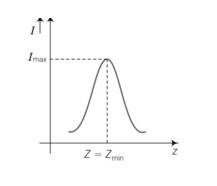Physics Ncert Solutions Class 12th
Get insights from 1.2k questions on Physics Ncert Solutions Class 12th, answered by students, alumni, and experts. You may also ask and answer any question you like about Physics Ncert Solutions Class 12th
Follow Ask QuestionQuestions
Discussions
Active Users
Followers
New answer posted
4 months agoContributor-Level 10
This is a multiple choice answer as classified in NCERT Exemplar
We have to transmit energy (power) over large distances at high alternating voltages, so current flowing through the wires will below because for a given power (P).
P= ErmsIrms, Irms is low when Erms is high.
Power loss= I 2 rms R= low
New answer posted
4 months agoContributor-Level 10
This is a multiple choice answer as classified in NCERT Exemplar
(c, d) According to the question, the current increases on increasing the frequency of supply. Hence, the reactance of the circuit must be decreases as increasing frequency.
For a capacitive circuit, capacitive reactance Xc=
For an CR circuit Z= when frequency increases X decreases.
New answer posted
4 months agoContributor-Level 10
This is a multiple choice answer as classified in NCERT Exemplar
(a, d) inductive reactance XL= 2 L


As frequency (ν) increases, Z decreases and at certain value of frequency know as resonant frequency (ν0), impedance Z is minimum that is Zmin= R current varies inversely with impedance and at Zmin current is maximum.
New answer posted
4 months agoContributor-Level 10
This is a multiple choice answer as classified in NCERT Exemplar
Secondary voltage Vs= 24V
Power associated with secondary Ps = 12W
Is= = 12/24= 0.5A
I0= Is = 1/ A
New answer posted
4 months agoContributor-Level 10
This is a multiple choice answer as classified in NCERT Exemplar
Average power dissipated is ErmsIrmscos
Z=
= =
Irms= 6/ A
cos =R/Z=2/
pav= 6 = 14.4W
New answer posted
4 months agoContributor-Level 10
This is a multiple choice answer as classified in NCERT Exemplar
(c) As we know that Q= to make Q high R should be low, L should be high and C should be low.
New answer posted
4 months agoContributor-Level 10
This is a multiple choice answer as classified in NCERT Exemplar
As we know resonant frequency is v0=
To increase capacitance we must connect it to another capacitor parallel to the first.
New answer posted
4 months agoContributor-Level 10
This is a multiple choice answer as classified in NCERT Exemplar
(c) The voltmeter connected to AC Mains reads mean value (
New answer posted
4 months agoContributor-Level 10
This is a multiple choice answer as classified in NCERT Exemplar
(c) For delivering maximum power from the generator to the load, total internal reactance must be equal to conjugate of total external reactance.
XL=-Xg
New answer posted
4 months agoContributor-Level 10
This is a multiple choice answer as classified in NCERT Exemplar
(b) I0= Irms= (5)A
I=I0sinwt = 5 sin = 5 A
Taking an Exam? Selecting a College?
Get authentic answers from experts, students and alumni that you won't find anywhere else
Sign Up on ShikshaOn Shiksha, get access to
- 65k Colleges
- 1.2k Exams
- 686k Reviews
- 1800k Answers
